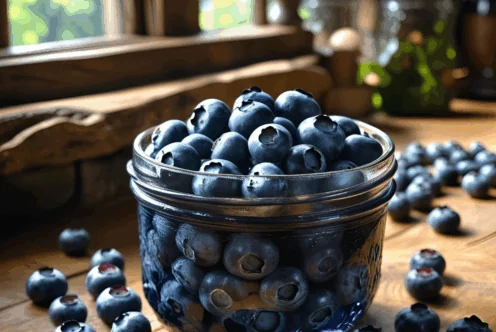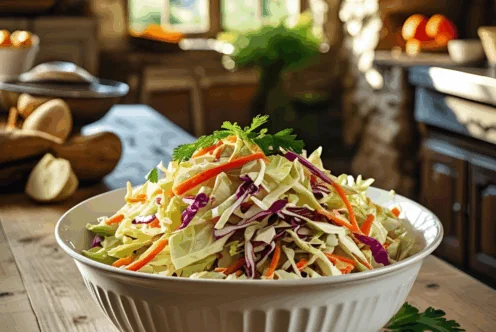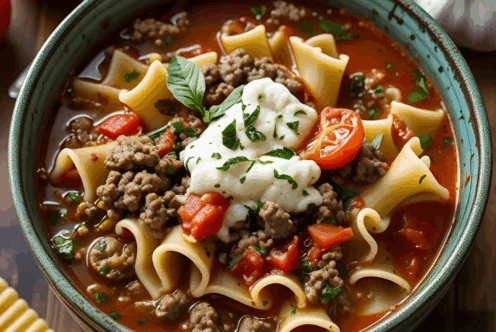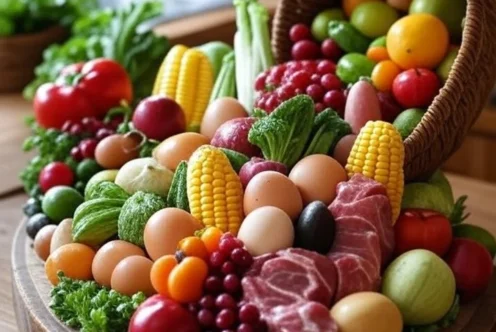Blog
Enjoy Summer Produce Through the Colder Months!
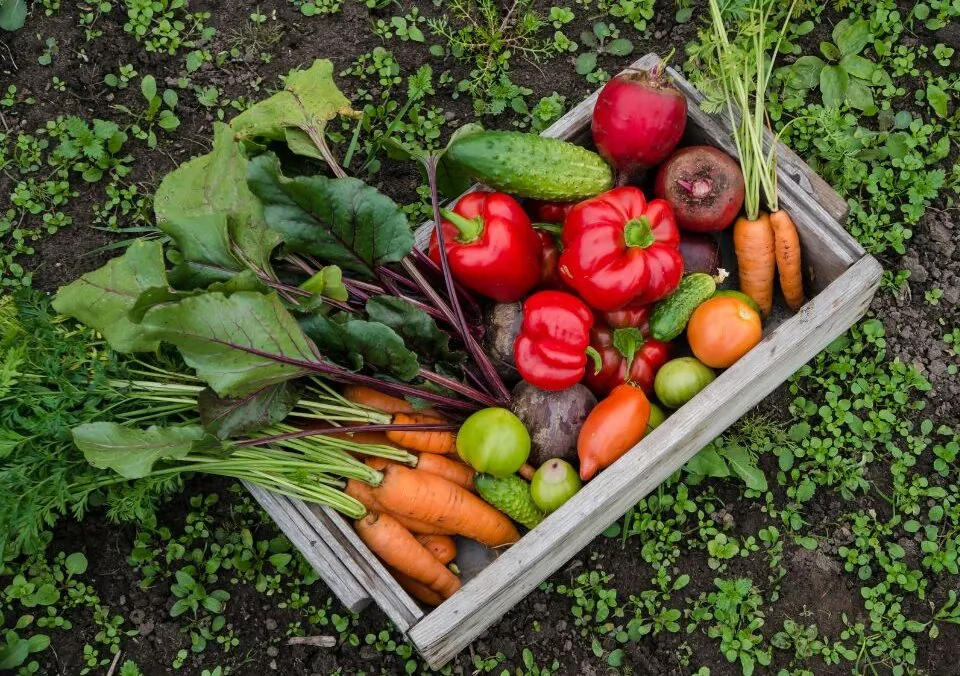
As summer draws to a close, one of the biggest joys of the season is the abundance of fresh produce. From juicy peaches and succulent tomatoes to crunchy beans and vibrant corn, summer offers a colorful array of fruits and vegetables. But what happens when the season shifts and that glorious bounty starts to dwindle? Fortunately, with a few simple steps, you can preserve these delicious foods for enjoyment all fall and winter long – simply by freezing them!
The Benefits of Freezing
Nutritional Value and Taste Preservation
According to Melissa Clark, a cooking columnist for The New York Times, freezing is an excellent method for preserving summer produce without compromising nutritional value or taste. Unlike canning, which can alter the texture and flavor of vegetables, freezing retains the quality of your harvest. The high temperatures used in canning can break down nutrients and create a cooked flavor that is less desirable than the fresh taste of frozen items.
When you freeze fruits and vegetables, you essentially lock in the peak ripeness and quality. This means that when you pull out a bag of frozen corn or a container of blueberries in the dead of winter, they can taste just as good as they did when they were fresh.
The Freezing Process: Steps to Prepare Produce
To effectively freeze your summer produce, follow these general steps:
1. Choose the Right Produce
Select only the best quality fruits and vegetables for freezing. Look for items that are fully ripe but not overripe. Damage-free produce will yield the best results. Here are some excellent candidates for freezing:
- Fruits: Peaches, apricots, blackberries, blueberries, plums, figs, pears.
- Vegetables: Corn, tomatoes, summer squash, okra, peas, beans.
2. Wash and Prepare
Start by washing the fruits and vegetables under cool running water to remove dirt and any residues. It’s a good idea to scrub them with a brush, especially for root vegetables. After washing, prepare the produce as desired:
- Fruits: Remove pits, stems, or skins as needed, and cut them into smaller pieces if desired.
- Vegetables: Depending on the vegetable, you may want to trim, slice, or chop them into uniform sizes for even freezing and cooking later.
3. Blanching Vegetables
Blanching is a critical step for many vegetables as it helps to maintain color, flavor, and texture. It also diminishes the enzyme activity that can lead to loss of quality. Here’s how to blanch:
- Bring a pot of water to a rolling boil.
- Add the prepared vegetables in small batches, cooking them for 2-5 minutes (depending on the vegetable).
- Immediately transfer the vegetables to a bowl of ice water to halt cooking.
- Once cooled, drain well and proceed to the next step.
Here are some recommended blanching times for common vegetables:
- Corn: 4-6 minutes
- Green Beans: 3 minutes
- Peas: 2-3 minutes
- Summer Squash: 3 minutes
For more information on blanching, you can visit University of Georgia’s Extension.
4. Cooling
After blanching, allow the vegetables to cool completely. Spread them out on a baking sheet lined with paper towels or a clean dishcloth to ensure they are dry before freezing. This step helps prevent ice crystals from forming, which can negatively affect texture.
5. Packing for Freezing
Once cooled, pack your fruits or vegetables into suitable freezer containers or bags. Here are some suggestions:
- Plastic Freezer Bags: Squeeze out excess air before sealing; label with the date.
- Plastic Storage Containers: Leave some headspace for expansion.
- Vacuum Seal Bags: These are excellent for long-term storage.
Best Practices for Freezing Different Types of Produce
Fruits
- Berries: Wash and sort, then freeze in a single layer on a baking sheet. Once frozen solid, transfer to freezer bags.
- Peaches and Apricots: Blanch for 30 seconds, then remove skin if desired. Cut into slices before freezing.
- Pears: Peel and slice, treating with lemon juice to prevent browning.
Vegetables
- Corn: Cut kernels off the cob after blanching, then freeze.
- Tomatoes: Blanch briefly, skin if desired, and freeze whole or chopped.
- Squash: Slice or cube after blanching.
Storage Guidelines
Frozen fruits and vegetables are best used within 8-12 months for optimal taste and quality. After this time, they may still be edible but might lose some flavor and texture. For long-term storage tips, the USDA has helpful resources on food safety and storage.
Culinary Uses for Frozen Produce
Once you have your fruits and vegetables frozen, the possibilities are endless! Here are some delicious ways to incorporate them into your meals:
Soups and Stews
Frozen vegetables are perfect for throwing into soups and stews, allowing you to enjoy summer flavors even during the coldest months. Combine frozen corn, green beans, and tomatoes in a hearty vegetable soup to nourish your body and soul.
Sauces and Purees
Use frozen fruits to make vibrant sauces or purees. Blueberries, for instance, can be blended into a delicious sauce for pancakes, while peaches can create a sweet topping for desserts or yogurt.
Smoothies
Fruits like bananas, berries, and peaches add a delightful flavor to smoothies. Simply grab a handful of your frozen fruits and blend with yogurt or almond milk for a refreshing drink.
Pasta Dishes
Incorporate your frozen produce into pasta dishes for added flavor and nutrition. Roasted tomatoes and zucchini tossed with pasta and olive oil make a delightful, quick meal.
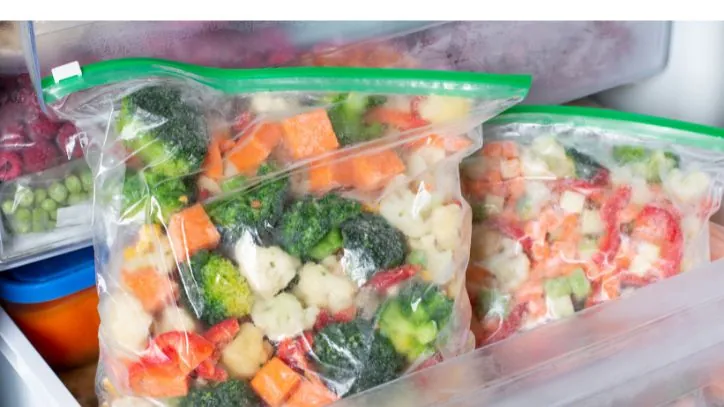
Local Produce and Farmers Markets
One way to ensure you’re getting the freshest summer produce is to shop at local farmers markets. These markets often offer a wide variety of seasonal fruits and vegetables grown in your area. Not only do you support local farmers, but you also get the opportunity to pick out the freshest items to freeze.
Preserving Other Items
While we focused on fruits and vegetables, don’t forget about other summer favorites that can be preserved as well:
Herbs
Herbs like basil, cilantro, and parsley can be chopped and frozen in ice cubes with olive oil or water. This allows you to have herb-infused flavors handy for cooking all year round.
Jams and Jellies
Consider making homemade jams or jellies with your summer fruit harvest. When sealed properly and stored in the freezer, these can last for a year or more, providing a sweet treat during winter months.
Conclusion
Freezing summer produce is an excellent way to extend the joy of the season into the colder months. With just a little effort, you can preserve fruits and vegetables at their peak quality, ensuring that you can savor the taste of summer long after the sun has set on the growing season.
For more tips on cooking and utilizing your frozen stock, be sure to check out the Fill Your Plate blog. Happy freezing and enjoy those summer flavors all year long!
By Heide Kennedy, Arizona Farm Bureau Communications Intern














